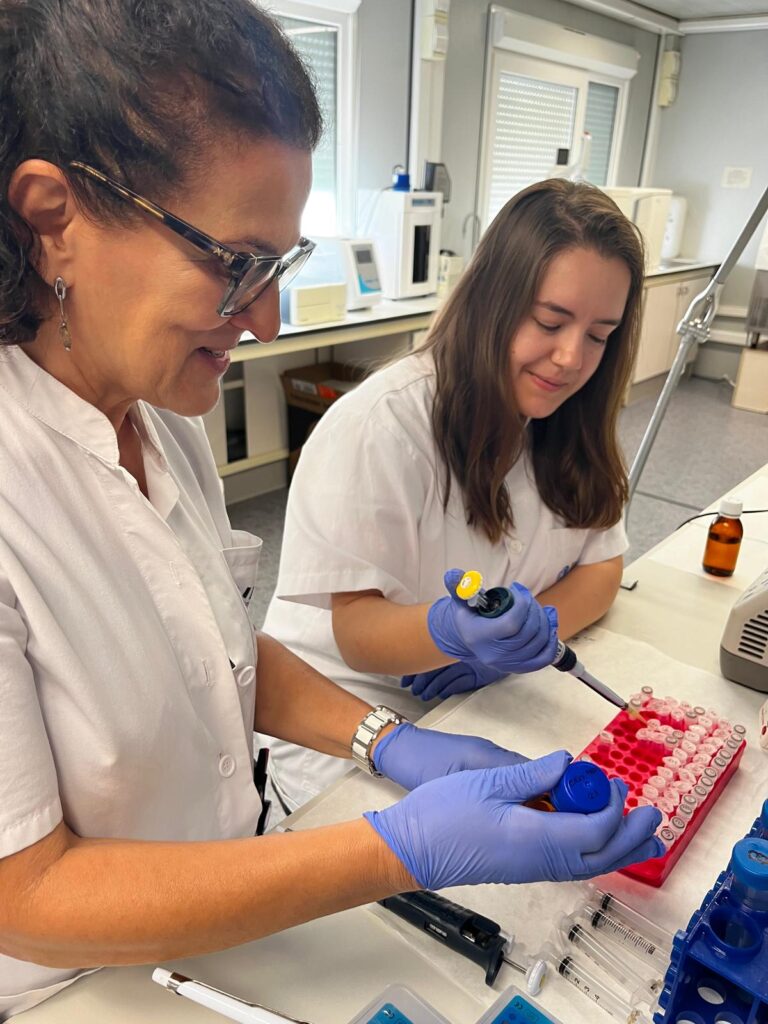This Wednesday, June 11, World Prostate Cancer Day, the importance of ensuring early detection is highlighted. The IISPV conducts research to find more effective and less invasive ways to predict advanced stage tumors and treat them earlier

Prostate cancer is the most common tumor among men in the province of Tarragona. Each year approximately 670 new cases are diagnosed there, a figure that represents almost one in four male cancers. On the commemoration of World Prostate Cancer Day, this Wednesday, June 11, the Institut d’Investigació Sanitària Pere Virgili (IISPV) recalls the importance of ensuring early detection of this type of cancer. In this sense, the IISPV has several active lines of research to better understand prostate cancer and to find more effective and less invasive ways to predict the prognosis of tumors and treat them in advance. This is highlighted by Dr. Matilde Rodríguez Chacón, head of the Disease Biomarkers and Molecular Mechanisms research group (DIBIOMEC) of the IISPV at the Hospital Universitari Joan XXIII de Tarragona, to whom the Spanish Association Against Cancer has recently granted a grant to develop a project focused on creating a new predictive tool for aggressive prostate cancer.
The main lines of research open to the group are, on the one hand, to find a safer and more accurate prognosis through innovative biomarkers – in this case through a novel test in semen – and, on the other, to delve into the hidden role of the fat that surrounds the prostate, which can act as a source of energy for the tumor, favoring its growth and aggressiveness. “What is of concern is not so much the presence of this fat on its own, but when it is part of a context of obesity or overweight. This does not mean that a person with obesity will necessarily develop prostate cancer, but it does mean that, if he or she does develop it, it is more likely to be more aggressive,” explains Dr. Rodríguez Chacón. For this reason, “controlling weight and maintaining healthy habits is key to reducing risks and facilitating a better prognosis”.
A safer and more reliable prognosis
Since 2016, the research group has been working closely with the Urology Service of the Joan XXIII Hospital in Tarragona on the development of a test designed to detect the aggressiveness of prostate cancer by analyzing biomarkers in liquid semen biopsy, with an accuracy of 90.9% to classify the aggressiveness of the tumor and allow its early treatment. Since its inception, this test has advanced significantly. Initially, seven biomarkers were considered, but thanks to the evolution of the group’s research, it has been reduced to three without losing prognostic efficacy. In addition, an algorithm has been designed that allows the application of these determinations in semen of the biomarkers in the clinical setting, with the aim of facilitating prognosis and personalization of treatment in affected patients. Now, the challenge for the research group is to validate the test with a larger number of samples through multicenter studies, a “necessary step, among others, to consolidate its use in routine medical practice”.
This research aims to reduce unnecessary biopsies, using less invasive and more reliable methods to detect aggressive tumors, as well as to offer personalized strategies for patients with non-aggressive tumors that do not require immediate surgery.
According to data from the Asociación Española contra el Cáncer in 2024, more than 34,000 cases of prostate cancer have been diagnosed in Spain, of which 5,400 were in Catalonia and 616 in Tarragona. It is estimated that between 2024 and 2029 there will be close to 150,000 new cases in Spain, with a notable increase among men under 70 years of age. Only 40% of men between 50 and 65 years of age in the province undergo regular check-ups, and this figure improves among those over 65, reaching 55%, although, according to experts, it is still insufficient.
The possible reason for the increase in cases in younger men, under 70 years of age, could be multifactorial. According to Dr. Rodríguez Chacón, this could be due to changes in lifestyle, improvements in diagnosis and early detection programs that identify tumors in earlier stages and in younger patients, as well as to environmental factors and genetic predisposition.